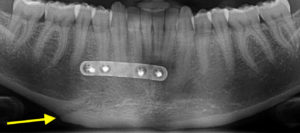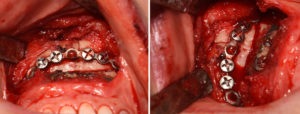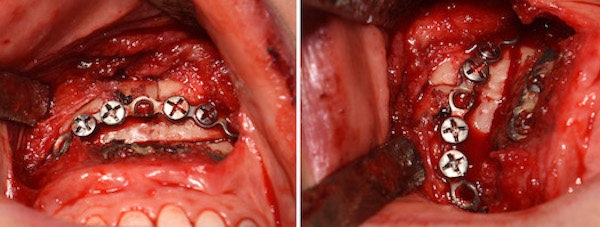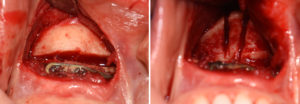Background: The chin can undergo a variety of bone reshaping procedures. While the sliding genioplasty for horizontal advancement is the most well known, there are numerous variations of it for other dimensional changes. The most common variation today is the inverted T-shaped genioplasty either done alone or as part of V-line lower facial narrowing.
In the inverted T-shaped genioplasty a horizontal bone cut is made as in the traditional sliding genioplasty. This is combined with a midline wedge bone removal. This creates three piece bone segments which when reassembled creates an inverted T-shaped osteotomy line pattern. This reassembly requires the use of plate and screws, typically using a centrally-placed square plate with four holes and screws. As the pieces are put together height reduction of the chin as well as horizontal advancement can be done as well. Thus the inverted T-shaped chin reduction osteotomy is truly a 3D chin reshaping procedure.


The inverted T-shaped chin reshaping osteotomy can be put together with a variety of plate and screw configurations. While central forms of fixation are most commonly used the presence of a non-removable fracture plate necessitates changing t0 alternative fixation plate methods.
Case Highlights:
1) The inverted T-shaped osteotomy technique is the intraoral technique for vertical chin shortening and narrowing
2) This intraoral chin osteotomy technique relies on a central confluence of the bone segments for fixation.
3) When centra fixation of the intraoral chin osteotomy is not possible a long spanning ‘smiley’ plate is needed.
Dr. Barry Eppley
Indianapolis, Indiana




